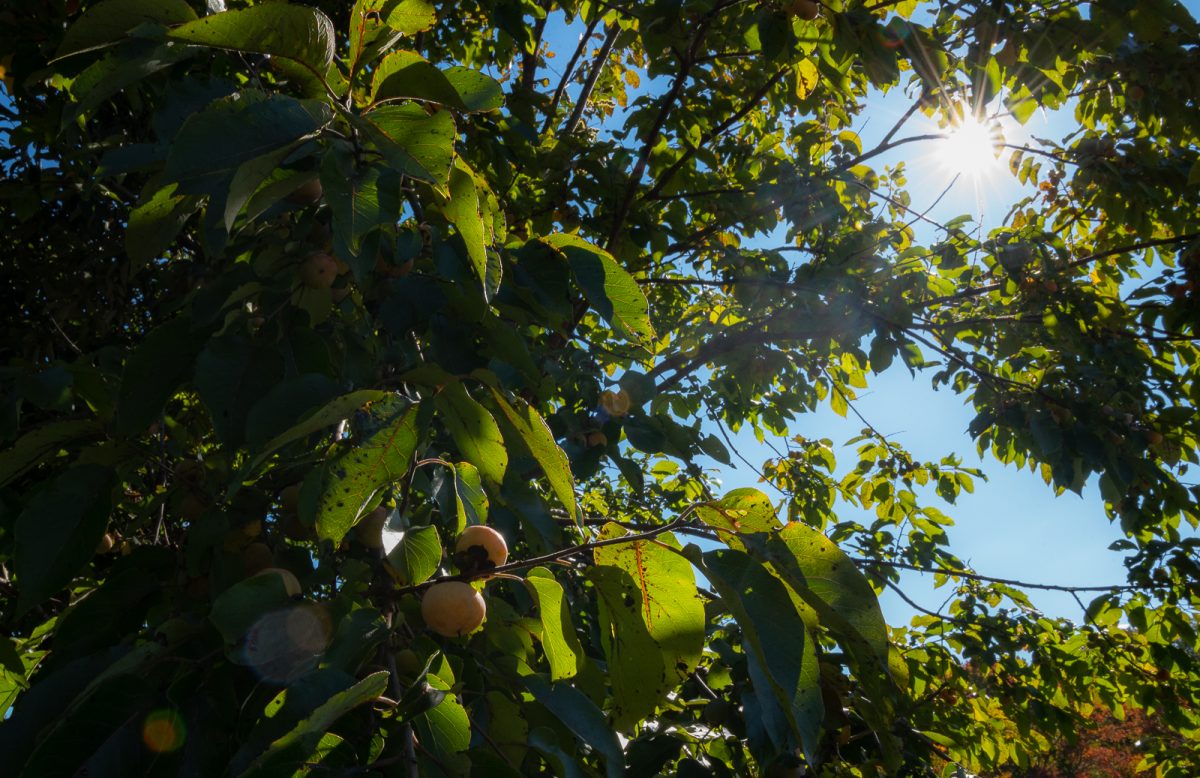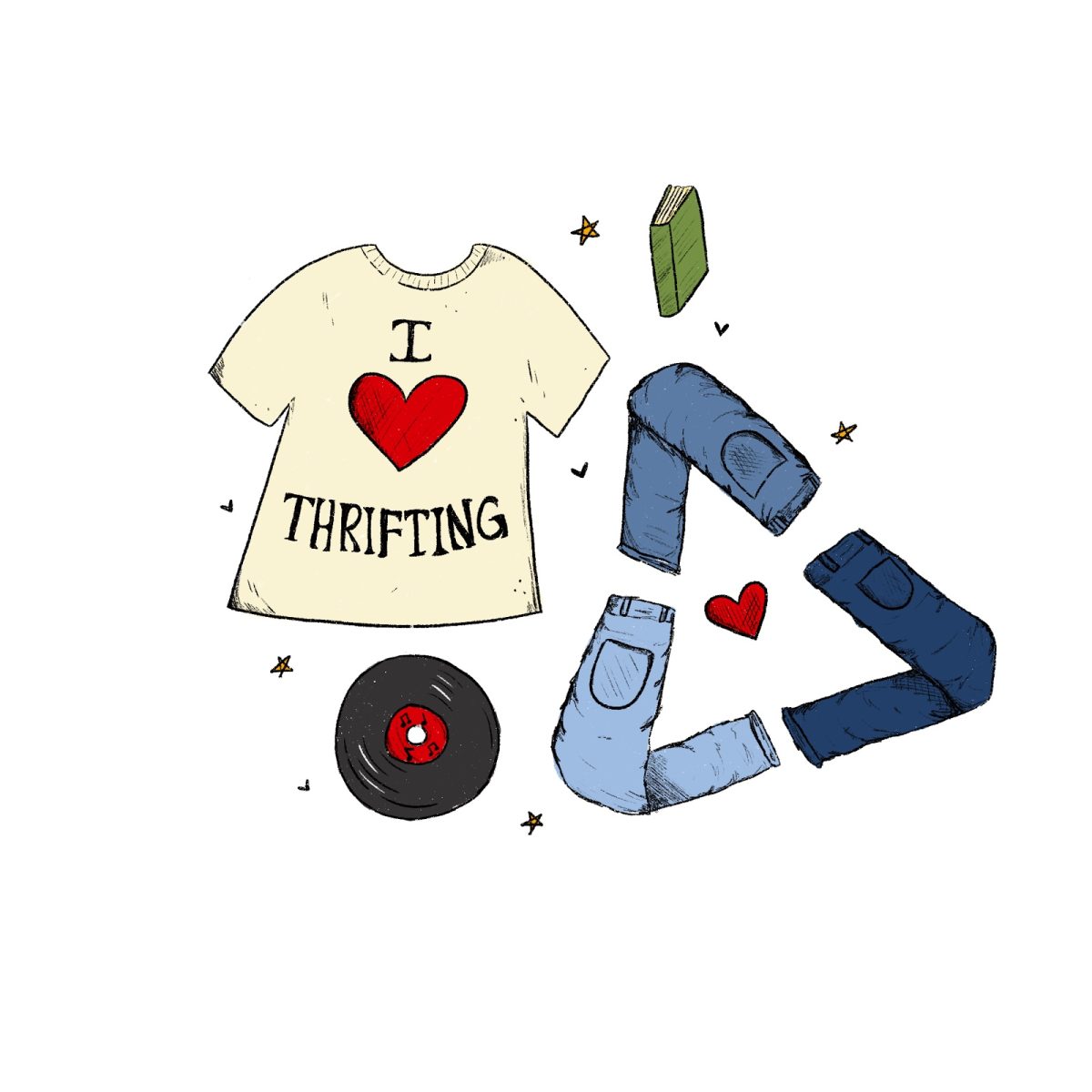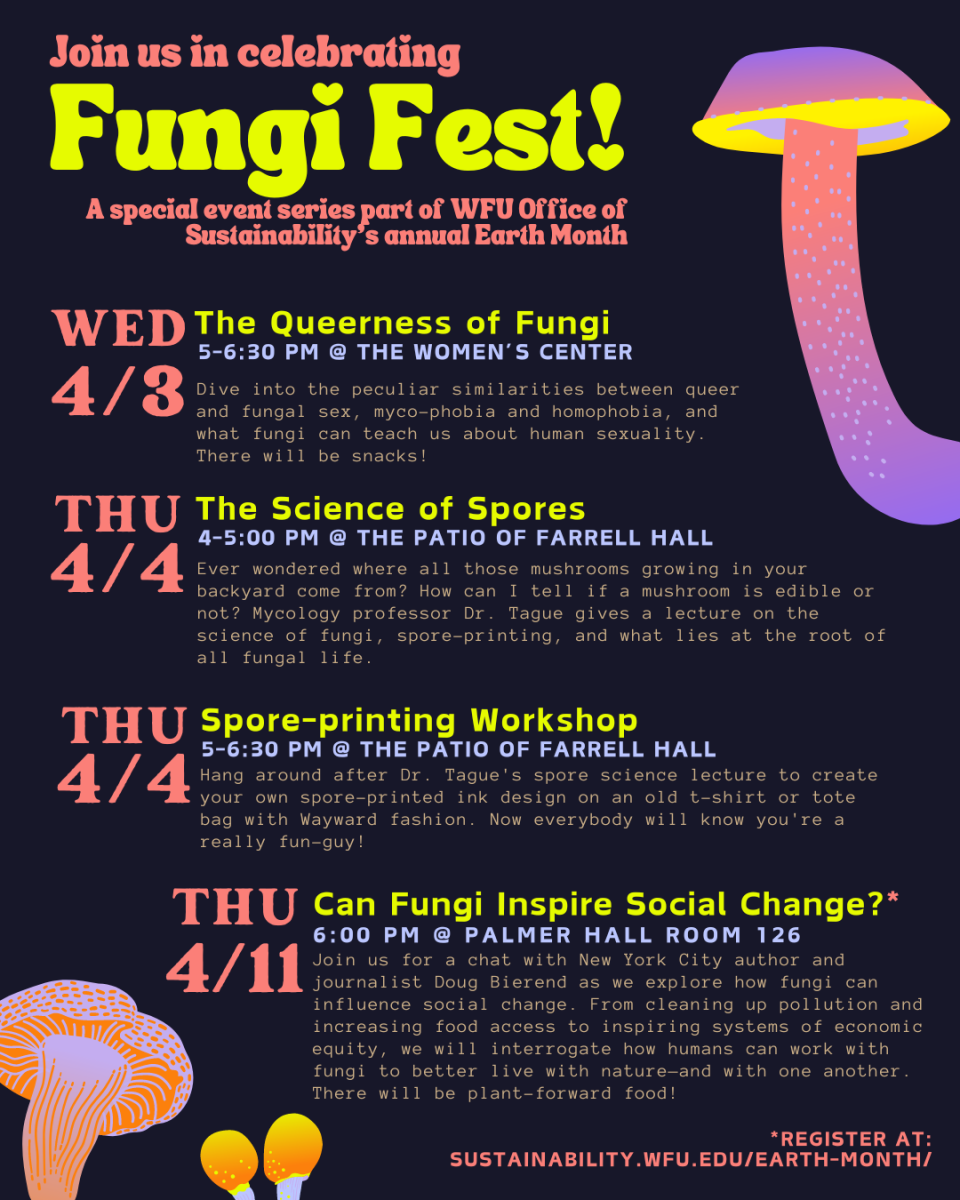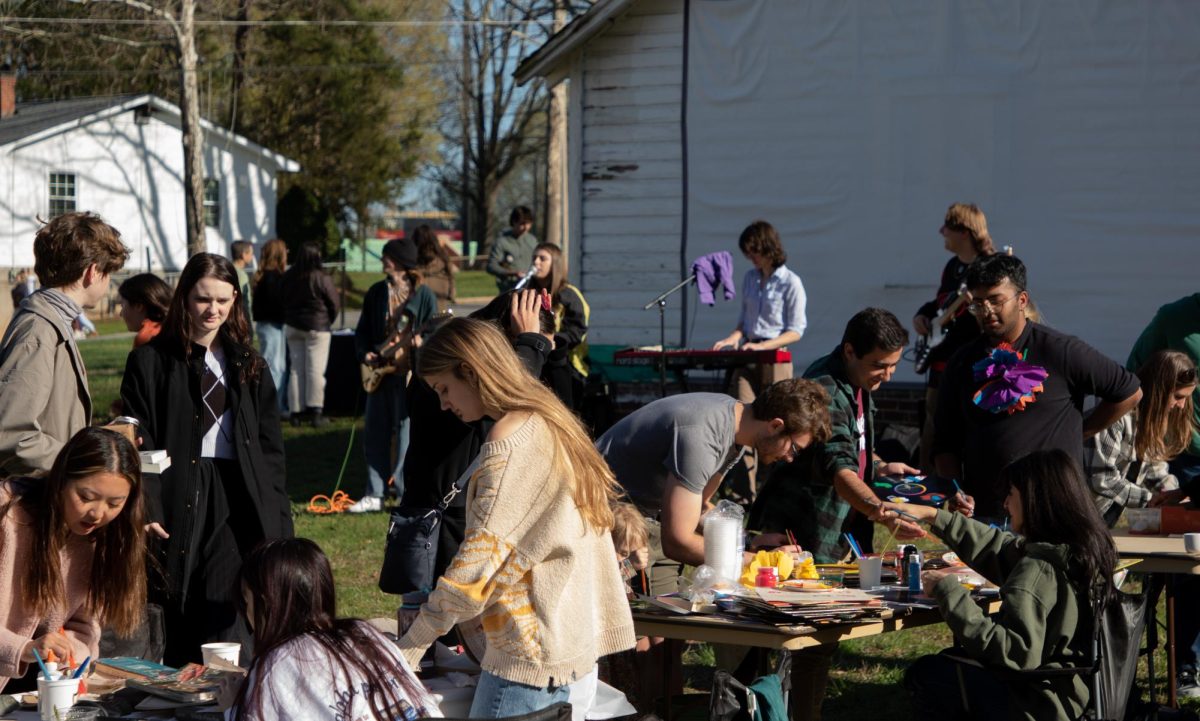Pit swipes, Old Golds and food dollars have long satiated the student body of Wake Forest — with nearby grocery stores and the occasional off-campus dinner to satisfy any cravings. However, some students, faculty and staff have found the secret to dining on fresh, seasonal and free food on campus: foraging. Hidden from those who aren’t looking, native fruits and nuts are abundant, especially if you know what you are looking for.
Sophomore and Winston-Salem local Neriah Olivier is glad she attended college close to home for two sweet reasons — to be close to her family and the native pawpaw fruit.
“When pawpaw season rolls around in late August, it’s one of my favorite times. It’s a great way to close out the summer, going and scavenging for pawpaw groves,” Olivier said.
The pawpaw can be described as the halfway point between a banana and a mango. It is the largest native fruit tree in North America, growing in the eastern United States. Wake Forest houses several pawpaw trees, which bear fruit just in time for the beginning of the calendar school year. While Olivier enjoys foraging as an occasional hobby, she uses caution with every outdoor morsel she finds.
“It’s hard to know what’s edible or not, and I like to be 100% sure what I’m collecting is good for me,” Olivier said. “I stay away from mushrooms, but feel pretty confident in easily identifiable things like fruit.”
You can overharvest and ultimately undermine the future supply. All of these things are parts of the ecosystem — we want them to remain within the system, and that means it’s important to know enough about the community of the species that you are interacting with.
— Dr. Amanda Sames, Visiting Assistant Professor for the Environment and Sustainability Studies Program
Pawpaws aren’t the only treat located on campus. Tucked away, there is a secret grove of fruiting trees, harboring a fig tree, native Chickasaw plums and persimmons — the location of which is urged to be found through personal exploration of the grounds. There are also many varieties of nuts to be collected when walking around, such as a large chestnut tree on the South Campus and a stately pecan tree in front of the Campus Garden. With a bit of time, dedication and research, one can find many uses, beyond eating, for foraged items. Growing everywhere — but very concentrated in the Reynolda trails — are black walnuts, which look like big green golf balls. These can be used to make dye or to eat.
Persimmons also grow in abundance, with several trees located on Wake Forest grounds. These rich, cinnamony fruits are ripe when they turn orange or yellow. They reach their peak harvest season when the leaves change to hues of yellow and orange, as well. Persimmons are a popular item when they roll out every year at Trader Joe’s, so foraging for them instead means you can save your money. If you wish to gather some persimmons yourself, there is a fruiting tree located near Piccolo and Palmer, which will be ready to harvest within the next few weeks.
Dr. Amanda Sames, a visiting assistant professor for the Environment and Sustainability Studies Program, has three crucial tips for foraging — especially if you’re just starting out.
“Make sure — your first several times — you go out with someone who knows what they’re looking for,” Sames said. “I think there are a ton of great guides, videos and folks on social media who are really good at talking through how to ID things. And that’s really helpful once you’ve built a foundation of knowledge, but to get to that point, you really have to go with someone who knows what they’re looking for.”
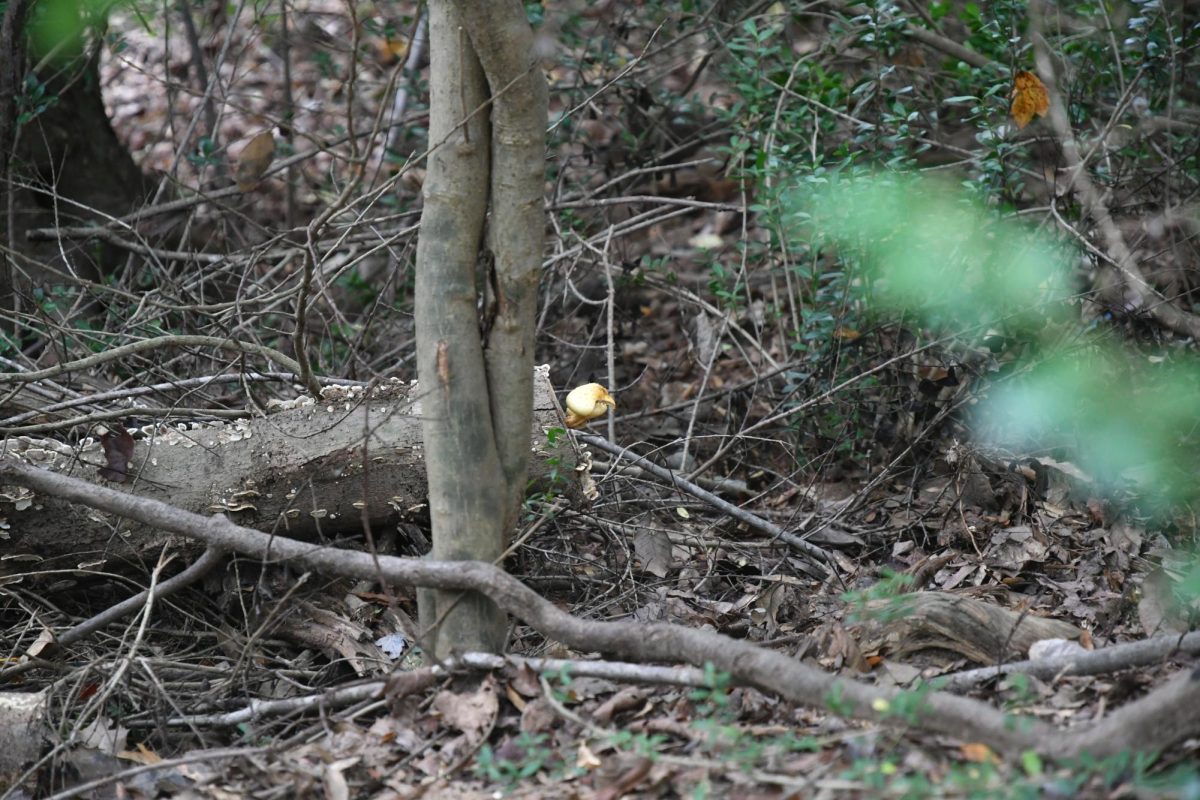
Sames continued: “Tip No. 2 is just to start paying attention … The slower you move through, the more you focus on what you notice, and the more likely you are to start to see things that you can forage.”
Sames also encourages enthusiasm, but to always be cautious.
“And then tip No. 3 is no matter what you’re interested in, whether it’s mushrooms or fruits or greens or anything else, try and start with the super easy low-stakes varieties,” Sames said. “There’s always things out there. ‘Oh, there really aren’t any dangerous lookalikes, and this is easy to identify.’ Start there.”
Foraging can be easy, relaxing and fun, but it’s important to have the right education and tools to start foraging mindfully and safely.
When going on new foraging endeavors, remember not only to harvest safely for you, but for the ecosystem. Overharvesting can lead to entire crops being wiped out and damaging the community you are taking from. Sames urges this practice, as well.
“You can overharvest and ultimately undermine the future supply,” Sames said. “All of these things are parts of the ecosystem — we want them to remain within the system, and that means it’s important to know enough about the community of the species that you are interacting with.”
As the Earth and nature give to you, remember to practice mindfulness, gratitude and reciprocity.
Correction Oct. 25: An earlier version of this article incorrectly displayed Una Wilson’s name as an author. The story now reflects that Ella Klein is the sole author.


